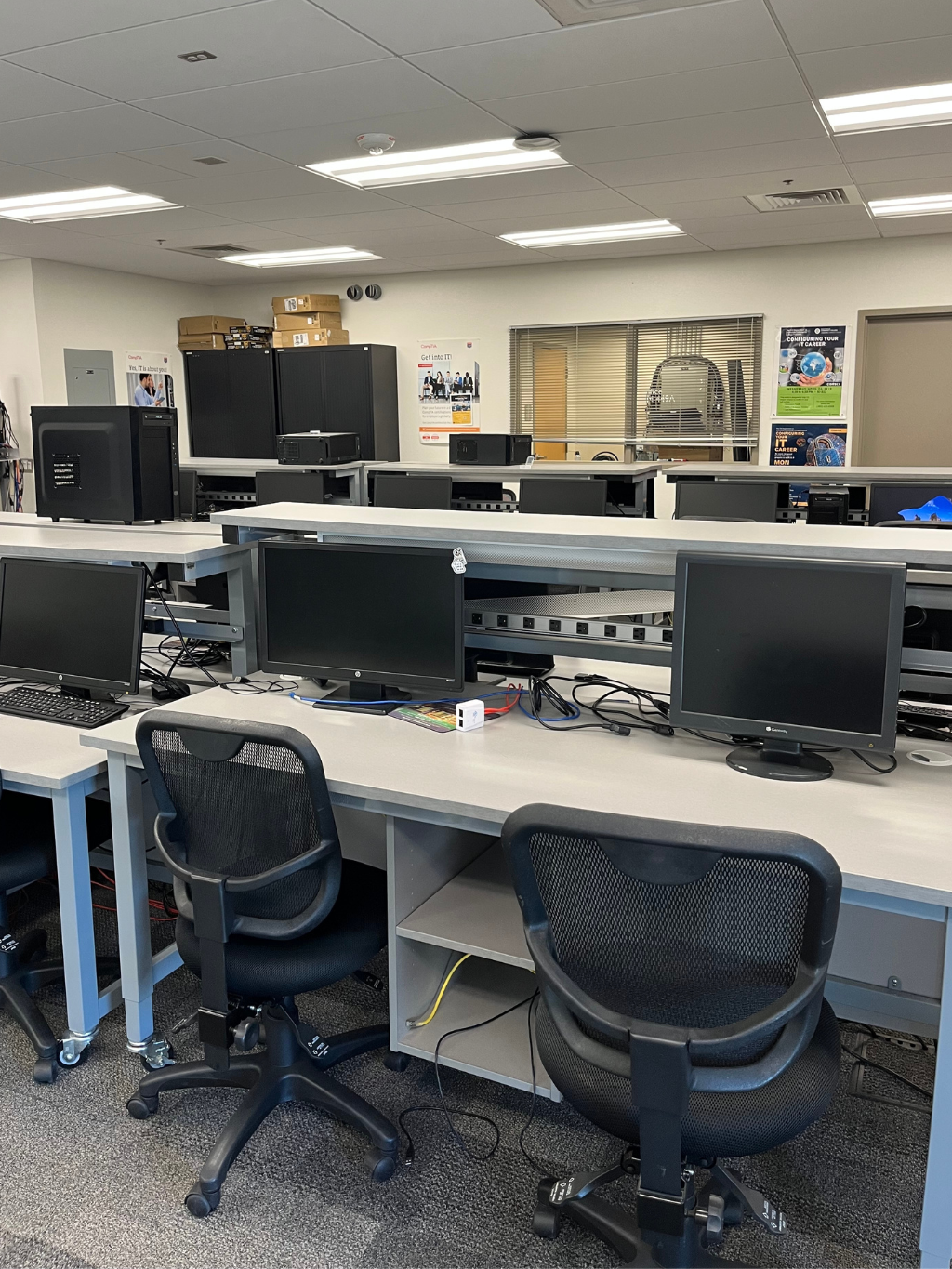
Addressing the Growing Demand for IT Support Professionals
The demand for IT helpdesk professionals is soaring, with hundreds of job openings available locally and the need increasing daily. This microcredential pathway helps bridge the gap by offering students an opportunity to gain hands-on experience in just one semester.
Beyond technical training, the program emphasizes soft skills—a critical component often overlooked by other training programs. Local businesses have highlighted that while technical know-how is essential, communication and problem-solving skills are just as crucial. This program ensures that students graduate with both, making them workforce-ready in just a few months.
“There are hundreds of jobs in this field and that number is growing. With just one semester of these technical courses, we can put a student in front of an employer, and that’s been true for most cases,” explained Ron Monroig, CIS Faculty at Scottsdale Community College.
The Power of Combining Technical and Customer Service Training
What sets this program apart is its unique approach to training. While many IT programs focus solely on technology, this pathway includes instruction on customer service and professional communication. Graduates learn how to:
- Communicate effectively with customers through verbal and written channels (emails, notes, and procedural scripts).
- Use industry-standard helpdesk applications and Customer Relationship Management (CRM) tools.
- Present themselves professionally in a virtual or in-person helpdesk setting.
“This course is different from other places because we teach both technical and soft skills,” noted Monroig. “Students receive training in working with helpdesk applications and CRMs, along with appropriate technical communication.”
The microcredential pathway, which previously had an in-person component, now offers a fully online option with webcam-based exercises, ensuring students develop their professional presence even in remote environments. “Whatever course you take from us, whether in-person or virtual, you’ll get the same experience,” says Monroig.
The Impact of Digital Badges and Certifications
While the digital badges earned through this microcredential are not yet industry-certified, they offer a structured and recognized form of professional development. Employers recognize these badges as Maricopa college-specific, and value these badges as a testament to a candidate’s skills in IT support and customer service.
“We use material from Education Design Lab (EDL), which consists of four modules focused on communication, handling difficult situations, and thinking on your feet,” Monroig shared.
Positive Feedback from Local Employers
Businesses in the region have expressed an urgent need for skilled IT professionals. Unfortunately, many companies are forced to look out of state or even out of the country to fill positions. This program aims to change that by building a strong local talent pipeline. Employers appreciate the program’s hands-on training approach, which ensures that graduates are job-ready from day one.
“There’s a huge vacancy out there, and it needs to be filled. One of the things we want to do is fill it with our local talent by creating that talent, and we can’t do it fast enough,” emphasized a faculty member.
Future Goals and Expanding Opportunities
Looking ahead, the IT Helpdesk Level I Microcredential Pathway is set to evolve alongside the IT industry. As government regulations and corporate structures shift, new job opportunities will emerge, and this program is designed to keep up with these changes. With a focus on practical, hands-on learning, the program provides an affordable alternative to costly private IT training schools, making it accessible to more students.
Preparing Students for the Workforce
One of the program’s biggest strengths is its emphasis on real-world experience. Unlike traditional classroom learning, students in this program work directly with hardware and software, learning how to install, configure, and troubleshoot IT systems. This hands-on experience is invaluable, allowing students to develop critical problem-solving skills in an open lab environment.
“The fact that they can actually touch, feel, see, get their hands involved in the actual disassembly and assembly of hardware, installation, configuration, and software… to actually physically do it as opposed to a scripted lab, which doesn’t allow for fixing errors, is a huge benefit,” said Monroig.
A donation of unused servers enabled students to build a fully functional data center, securing $700,000 in funding for further development (See images below).




Overcoming Challenges and Building the Future IT Workforce
While the program is incredibly valuable, one major challenge remains: student enrollment. Many individuals are intimidated by IT or unaware of the career opportunities available. The goal of the IT Helpdesk Microcredential Pathway is to eliminate that fear and engage students at an earlier age, encouraging them to explore IT as a viable and exciting career path.
“We have to find a way to get high school kids excited about technology. Many are intimidated by IT. Part of the job is to eliminate that fear so students can continue in that profession,” shared a program coordinator.
The IT Helpdesk Level I Microcredential Pathway is more than just a training program—it’s a direct response to the needs of local businesses. By equipping students with both technical and professional soft skills, the program helps fill crucial job vacancies and strengthens the local workforce. Whether students are looking for a career change, an affordable entry into IT, or a stepping stone to further education, this program provides a fast and effective pathway to success.
For businesses in need of qualified IT support professionals, this program is a game-changer—helping to build a stronger, smarter, and more skilled workforce right here in our community.